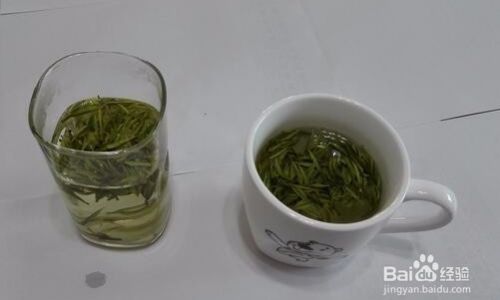Introduction
Daikon radish, a crisp and mildly peppery root vegetable, is a staple in Asian cuisine, prized for its versatility and ability to absorb flavors. Among its many culinary applications, daikon radish filling stands out as a beloved ingredient in dumplings, buns, spring rolls, and pastries. This article delves into the intricacies of preparing daikon radish filling, exploring techniques to enhance its texture, flavor, and adaptability. Whether you’re a seasoned home cook or a novice in the kitchen, mastering this recipe will elevate your dishes to new heights.
Understanding Daikon Radish
Before diving into the preparation process, it’s essential to appreciate the qualities of daikon radish. Native to East Asia, this vegetable—scientifically known as Raphanus sativus var. longipinnatus—boasts a juicy, sweet flesh with a subtle spiciness that mellows when cooked. Its high water content makes it ideal for fillings, as it contributes moisture without overwhelming other ingredients. However, this same trait demands careful handling to prevent sogginess.
Selecting the Perfect Daikon Radish
The foundation of a great filling begins with selecting the right daikon. Look for firm, unblemished roots with smooth, vibrant skin. Avoid specimens with soft spots or wrinkles, as these indicate age or improper storage. Size matters too: medium-sized daikons (approximately 8–10 inches long) offer the best balance of flavor and texture. Larger ones may be fibrous, while smaller ones could lack depth.
Preparation: Cleaning and Grating

- Peeling and Trimming: Rinse the daikon under cold water to remove dirt. Use a vegetable peeler or sharp knife to strip away the tough outer layer. Trim the top and bottom ends, which can be bitter.
- Grating Techniques: The goal is to achieve fine, even shreds that cook uniformly. A box grater with medium holes works well, but a food processor fitted with a grating attachment saves time. For authenticity, some recipes call for hand-cutting the daikon into matchsticks, though this is labor-intensive.
Removing Excess Moisture
Daikon’s high water content is both a blessing and a challenge. To prevent a watery filling, salting is crucial:
- Salting Method: Place the grated daikon in a colander or cheesecloth-lined bowl. Sprinkle generously with kosher salt (1–2 tablespoons per medium daikon) and toss gently. Let it sit for 20–30 minutes.
- Draining Process: The salt draws out moisture. Rinse the daikon under cold water to remove excess salt, then squeeze firmly in batches to extract liquid. Pat dry with paper towels for good measure.
Sautéing Aromatics and Flavor Base
Aromatic vegetables like garlic, ginger, and scallions form the flavor backbone of the filling:
- Heat Oil: In a skillet over medium heat, warm 1–2 tablespoons of sesame oil or neutral oil (like vegetable or canola).
- Sauté Aromatics: Add minced garlic (1–2 cloves), grated ginger (1 teaspoon), and sliced scallions (2–3 stalks). Cook until fragrant but not browned (1–2 minutes).
- Optional Additions: For depth, toss in dried shiitake mushrooms (rehydrated and minced) or wood ear mushrooms. These add umami and chewiness.
Cooking the Daikon Filling

- Combine Ingredients: Add the drained daikon to the skillet. Stir to coat with the aromatic oil.
- Seasoning: Season with soy sauce (1–2 tablespoons), white pepper (½ teaspoon), and a pinch of sugar to balance flavors. For a hint of smokiness, add a dash of toasted sesame oil.
- Cooking Time: Sauté for 5–7 minutes until the daikon softens slightly but retains a bit of crunch. Avoid overcooking, as this leads to mushiness.
- Cooling: Transfer the filling to a plate and spread it out to cool rapidly. This prevents residual heat from steaming the mixture further.
Enhancing Flavor and Texture
The beauty of daikon filling lies in its adaptability. Experiment with these variations:
- Protein Boost: Mix in ground pork, shrimp, or tofu for heartier fillings. Sauté the protein separately before combining.
- Vegetarian Twists: Add shredded carrots, bean sprouts, or chopped water chestnuts for crunch.
- Spicy Kick: Incorporate chili oil, Sichuan peppercorns, or fresh cilantro for heat.
- Sweet Notes: A drizzle of mirin or honey can highlight the daikon’s natural sweetness.
Applications for Daikon Filling
- Dumplings (Jiaozi/Gyoza): Pair with pork or shrimp for classic dumplings. The daikon’s moisture ensures juicy bites.
- Steamed Buns (Baozi): Encase the filling in soft dough for fluffy, savory buns.
- Spring Rolls: Wrap in rice paper with vermicelli noodles and herbs for a refreshing appetizer.
- Fritters (Radish Cakes): Mix with rice flour and steam, then pan-fry for crispy edges.
Troubleshooting Common Issues

- Soggy Filling: Ensure thorough draining and avoid overloading the mixture with high-moisture ingredients.
- Bland Flavor: Amplify seasonings gradually. Taste and adjust before cooling.
- Mushy Texture: Undercook slightly to preserve crunch. Chill before using in dough-based dishes.
Storage and Make-Ahead Tips
- Refrigeration: Store cooled filling in an airtight container for up to 3 days.
- Freezing: Portion into zip-top bags and freeze for up to 3 months. Thaw overnight in the fridge before use.
Cultural Significance and Regional Variations
Daikon filling transcends borders, with each region adding its flair:
- China: Often paired with pork and cabbage in jiaozi, symbolizing wealth and prosperity.
- Japan: Used in osechi ryori (New Year’s dishes), where daikon’s white color represents purity.
- Korea: Incorporated into mandu (dumplings) with kimchi for a spicy-tangy twist.
Conclusion
Crafting daikon radish filling is an art that balances precision and creativity. By mastering the techniques of salting, sautéing, and seasoning, you unlock a world of culinary possibilities. Whether you’re wrapping dumplings for a festive feast or stuffing buns for a cozy meal, this filling promises to delight with its refreshing crunch and adaptable flavor. Experiment, taste, and let the humble daikon radish transform your kitchen creations into memorable dishes.

Final Tips for Success
- Uniformity: Consistent grating ensures even cooking.
- Patience: Rushing the draining process leads to sogginess.
- Balance: Let the daikon shine—don’t overpower it with competing flavors.
With practice, you’ll refine your technique, turning this simple vegetable into a star ingredient. So grab a daikon, sharpen your knife, and embark on a journey of flavor and texture that celebrates the best of Asian cuisine.






0 comments